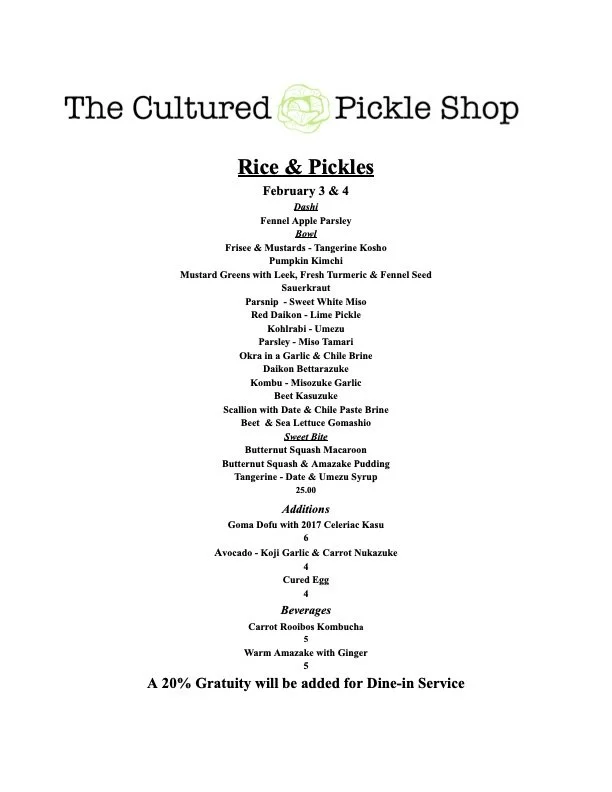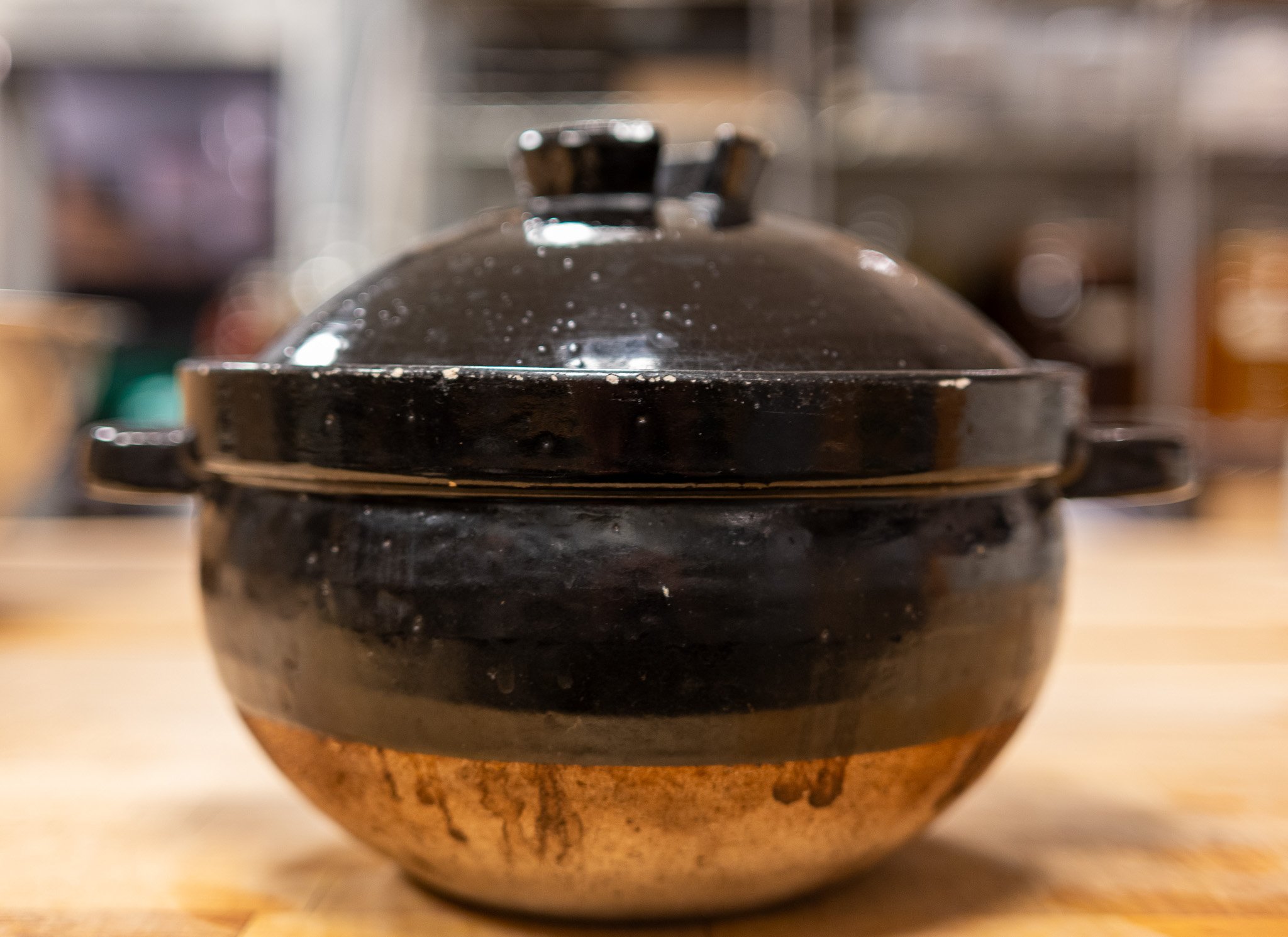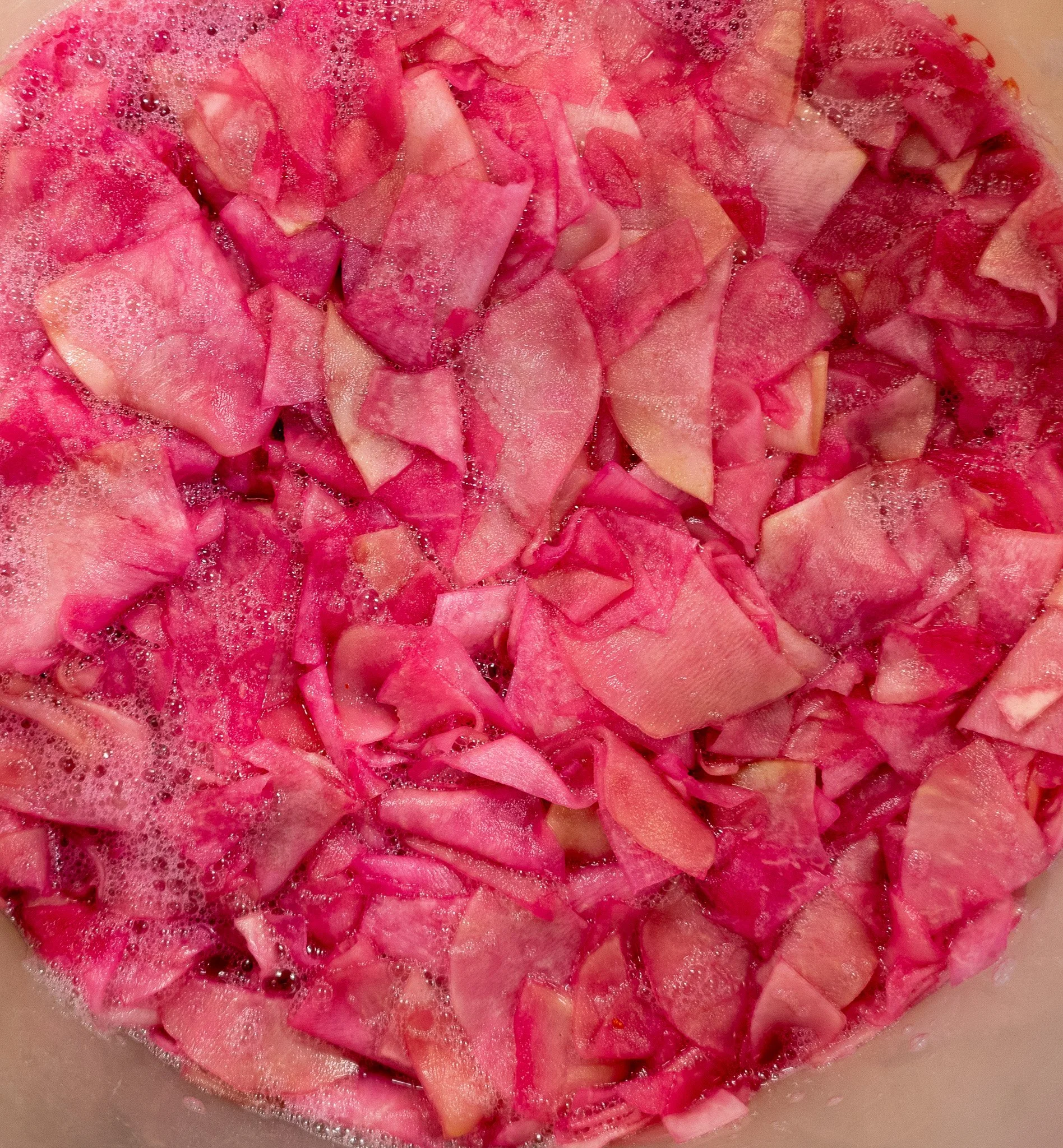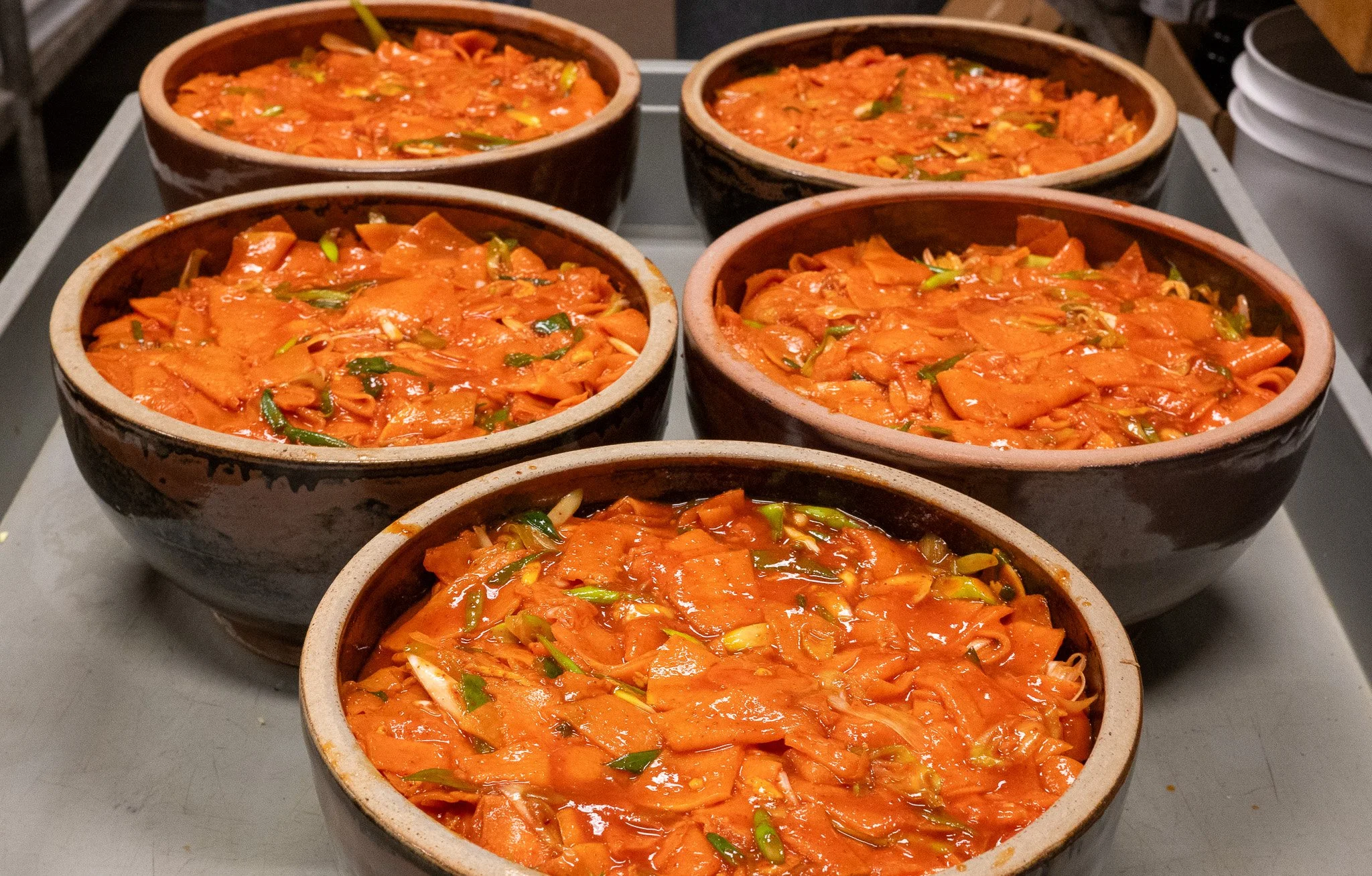Rice & Pickles February 3 & 4
If you join us for Rice and Pickles on the weekend and sit at the bar across from me, I take you through the bowl as I build it, describing how each component is made. If you are a repeat guest at the bar, you’ll know that I definitely have a spiel. That spiel changes a little from week to week because the bowl changes a little from week to week. For regulars, I try to switch it up a bit. I leave some things out, give briefer descriptions, or take deeper dives into one or two components. This recap of the Rice & Pickles Bowl will essentially be my weekly recitation told as if there is a combination of regulars and newcomers at the bar.
Menu
When you Dine in with us everything from the Dashi to the Sweet Bite is included in the meal. So, the only decisions you’ll need to make are the additions. We have
Goma Dofu, which translates to Sesame Tofu. Goma Dofu is not a true tofu, in that there is no soy in it. It is made entirely out of Sesame Seeds, which are toasted, ground, pureed with some Dashi, and then heated with Kudzu Root. Kudzu Root is a root starch that acts as a binder and lends a texture to the finished product that is similar to a silken tofu, which is where it gets its name. We also have avocado. The avocados this week are Fuertes; we top them with fuyu persimmon puréed with young green Umeboshi. We also offer a cured egg. We make the eggs every Wednesday. They are a six-and-a-half minute egg that we marinate in a mixture of tamari and shiso vinegar, which is a shiso kombucha that has gone to acetic, or vinegary, to use a beverage, but the shiso flavors are still nice and clean, so we long age it into a mild vinegar mix it with the tamari and sake lees from last years Kabocha squash ferment.
Donabe
We always begin the bowl with a 50/50 blend of short-grain brown and sweet brown rice, sticky or glutinous brown rice, grown by the Lundberg Family here in California. We cook our rice in a Donabe. Donabe are a family of Japanese clay cooking vessels. The Donabe we use is called a Kamado-san and is specifically designed as a rice cooker. Our Donabe comes from Iga, Japan, and has been made by the Nagatani-en family for 5 generations. Iga is a great location for Donabe making because the clay body that is found in and around Iga has a high microscopic fossil content, which results in superior heat retention in the clay products that come out of the area; so, not only is the Donabe a beautiful and effective rice cooker but it also acts a warmer as it's very slow to cool once it has come off of the flame. We top the rice with a gomashio or sesame salt. Our take on this traditional Japanese toasted sesame and salt condiment is that instead of using salt, we use either one of our ferments that we have dried and powdered or a seaweed. Today, we have toasted sesame seeds and dried and powdered beet pulp left over from juicing beets for kombucha, which gives it color, and we use Sea Lettuce instead of salt.
Beet & Sea Lettuce Gomashio
In the center of the bowl, we have parsnip that is steamed, pureed, and seasoned with a sweet white miso that we make here at the shop. At the bottom center of the bowl is a classic cabbage and sea salt sauerkraut. To the right of that, we have Kohlrabi pickled in the Brine from our Umeboshi plums, also called Ume Vinegar or Umezu. The Kohlrabi is shaved on the mandoline, mixed with Umezue, and left to sit for a couple of days. Continuing to the right along the bottom of the bowl,l we have we have Bettarazuke. A couple of weeks ago, we made a mash made from rice, rice koji, and barley shochu; we put dried and salted daikon in the mash and let it ferment for about a week. Next to the Bettarazuke, we have a Kimchi of Pumpkin. Nestled in amongst the kimchi, the daikon and the kohlrabi is parsley that was plucked and marinated in miso tamari, the liquid that rises to the top of the vessel during our sweet white miso production. Finally, up at the top of the right side of the bowl, we have okra. The okra was fermented in a brine with chile and garlic.
Parsnip & White Miso
Kohrabi
Kohlrabi
Kohlrabi in Umezu
Pumpkin Kimchi
On the left side of the sauerkraut, along the bottom of the bowl, are mustard greens fermented with leeks, fresh turmeric and fennel seed. Next to the mustard greens, we have Red Daikon mixed this week with our Indian Pickled Limes - an 11-month fermentation of limes; they are our version of an Indian achar, like the mango pickle you might get on the side of your dosa. The limes are minced, mixed with the Red Daikon, and left to sit for a few days. Next to the red Daikon is Kombu with Misozuke Garlic. On Tuesday, we took the Kombu from last week's dashi, julienned it, and mixed it with Misozuke Garlic. The garlic is a young garlic harvested in June of 2022 and buried in a Hatcho miso, where it has been fermenting ever since. The garlic and the miso are minced together and mixed with the kombu.
Red Daikon with Indian Picklede Lime
Misozuke Garlc
Above the Parsnip puree, we have slices of Beet. The beets were fermented in sake lees for two years- Kauzuke Beetsl. Takara Sake, one of the larger sake producers in our region, is just a few blocks from The Shop. We essentially tap into their waste stream; we get the byproduct from their fermentation, a paste made up of rice, rice koji, and yeast. We take that paste, called kasu or sake kasu, and we add sugar to it to feed the yeast that is still living in it; we add salt to it to moderate the fermentation and for texture preservation, and then we bury vegetables, such as Beets, in it for an average of 12-18 months to make the pickle known as kasuzuke which means pickled in kasu. Today's greens are a mix of Frisee and Mustards. They are dressed with a fermented yuzu rind or a Kosho. Kosho is traditionally made with yuzu rind. We make ours with a variety of California citrus. We took the rind from the yuzu, pureed it with salt, and fermented it for about a week. We then took that fermented citrus paste and thinned it with olive oil and yuzu juice to make a salad dressing. Finally, we add a Scallion crisp on top of the puree. The Scallion was rubbed with a paste we make from dates, tamari, and the brine from our chile paste and dehydrated.
Beet Kasuzuke
Frisee & Mustards
Scallion rubbed with Date & Chile Paste













